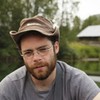A man talks on the phone outside the Belle Équipe bar, in Paris, shortly after gunmen opened fire on the crowd on November 13, killing 19. (Photo by Etienne Rouillon/VICE News)
Snipers positions themselves on a roof during the anti-terror rally in Paris on January 11. (Photo by Etienne Rouillon/VICE News)
Police patrol the area outside the Bataclan concert hall, where gunmen killed 90 people on November 13. (Photo by Etienne Rouillon/VICE News)
First responders and forensic police arrive outside the Charlie Hebdo headquarters on January 7. (Photo by Etienne Rouillon/VICE News)
Armed police officers patrol the area outside Porte de la Villette, in the north of the city, on January 8. (Photo by Etienne Rouillon/VICE News)
Journalists and members of the public gather on a roundabout on January 9, near the scene of the police shootout with the Kouachi brothers in Dammartin-en-Goële. (Photo by Etienne Rouillon/VICE News)
Reporters and members of the public stand in front of a police line during the raid in Saint-Denis. (Photo by Etienne Rouillon/VICE News)
Police officers cordon off the entrance to Primark on July 13, after gunmen took hostages inside the shopping mall. (Photo by Etienne Rouillon/VICE News)
